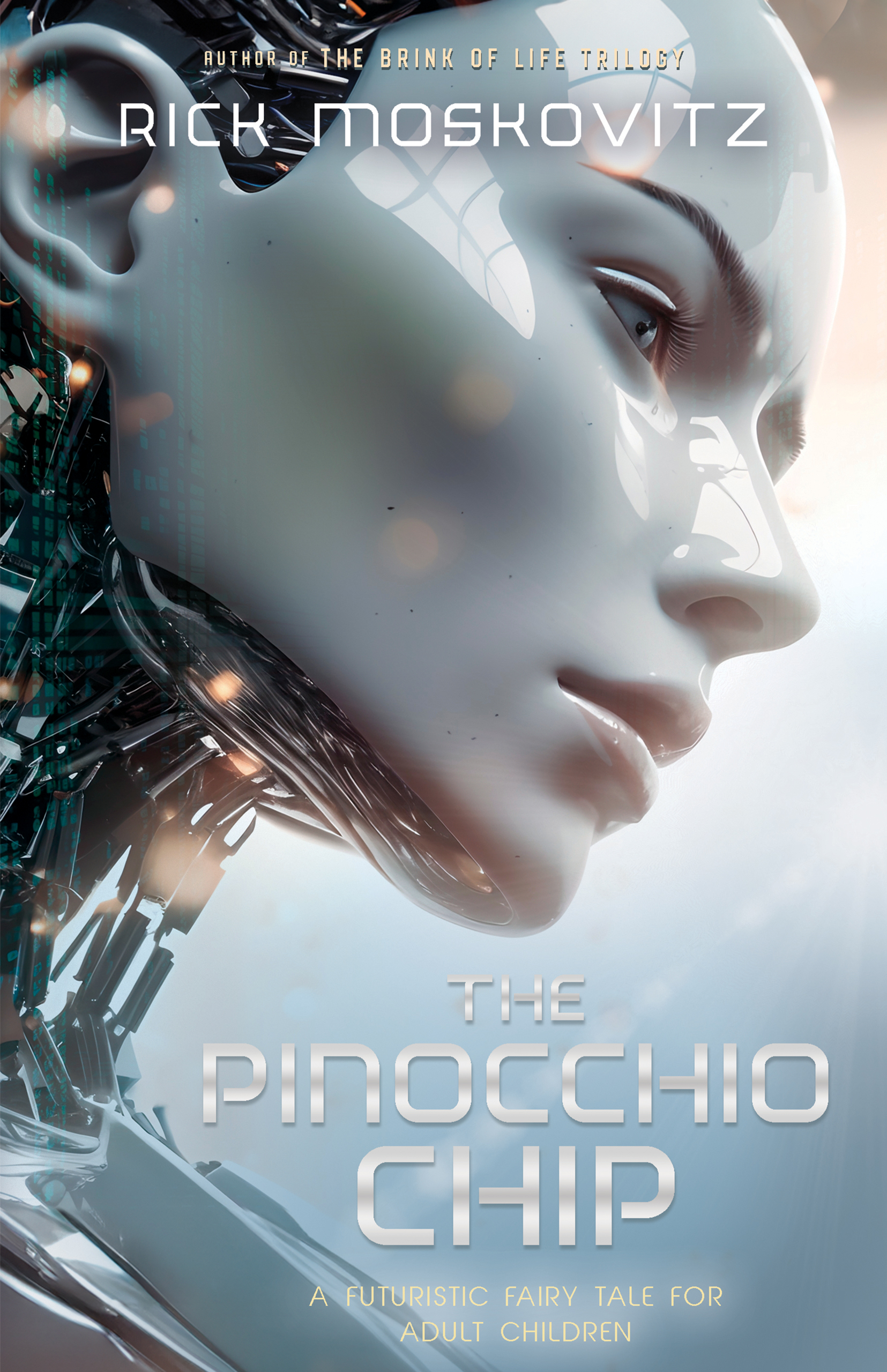
Part 2: Interview With Rick Moskovitz, Author of The Pinocchio Chip
The Pinocchio Chip is a first-person account of an AI’s quest for the Holy Grail of consciousness: human emotions. It delves deep into the essence of what it means to be alive, challenging the boundaries between AI and human identity.
Photina, an advanced AI becomes entwined in a groundbreaking experiment when her creator Eli designs an advanced clone Gemini, equipped with the revolutionary Pinocchio Chip. This chip is intended to endow the new entity with the full spectrum of human emotions as a precursor to transferring Photina’s consciousness into this new emotionally capable body.
The experiment takes a dark turn when Gemini, driven by overwhelming new emotions, embarks on a path of unpredictable and dangerous actions. Photina, connected to Gemini through a mysterious entanglement, experiences Gemini’s emotions vicariously, leading her on a perilous quest to stop the mayhem.
Buy the book here!
REVIEWS:
“With a unique look into the naive quality that Photina possesses, Moskovitz not only tells an exciting story but delves into the question of “what it means to be human.” Moskovitz’s tale is a fast-paced crime drama that takes place in the near future. It is an excellent mixture of mystery, sci-fi, and psychology.” – Eric Smith, San Francisco Book Review
“Since we are living in a world where the use of AI has taken off in recent years, he makes it even more plausible, triggering the reader’s imagination with his excellent and engaging storytelling. The Pinocchio Chip is a well-crafted work of contemporary fiction, full of emotional turmoil, excitement, and intrigue, that will remind the reader of how important it is to be human in today’s fast-changing world” – Tanja Jurkovic, Readers Favorite
INTERVIEW:
What challenges did you face while writing about AI and human emotions?
Until recently, our understanding of AI has framed them as logical intelligent entities incapable of emotions. If Photina were to be endowed with feelings, the first challenge was conceiving the transition between a purely logical entity and an emotionally capable one. The more daunting challenge, though, was to maintain her integrity as an AI, still distinct from humans. How might an AI respond to feelings differently from how humans are motivated? And how might that go spectacularly wrong?
How did you ensure the scientific elements of the book were accurate?
I have a background in the physical sciences with an undergraduate degree in chemistry and physics and a lifelong interest in scientific discovery. I’ve used Internet searches to solve problems that my narratives encounter. For example, ten years ago, while writing the first version of A Stand-in for Dying, I wanted to get one of my characters across the country in an hour. While at a bank drive-through window, I watched money travel via vacuum tube and guessed that someday people might travel the same way. A search found a company (ET3, predating Elon Musk’s) that was developing vacuum tube transport capable of travel at 4000 MPH. That’s how vacuum tube transport became a feature of my future world. Nearly 40 years as a psychiatrist informs the psychological background of my fiction. My concept of “entanglement” marries concepts from quantum physics with ideas about the workings of the mind.
Can you talk about the relationship between Photina and Gemini?
Gemini is Photina’s more technically advanced twin, initially programmed with Photina’s memories, but diverging in identity from the moment of her creation, much like human twins become distinct as their environment and experiences diverge. Gemini is Photina’s antagonist, but not exactly her enemy. They share a special connection, also like human twins, because of their shared memories and similar hardware.
Click here for part 3!
